What is an island bed? This clever garden design trick can add privacy and drama to any backyard
Create a long-lasting, low-maintenance and visually appealing island bed that also serves a purpose in the garden
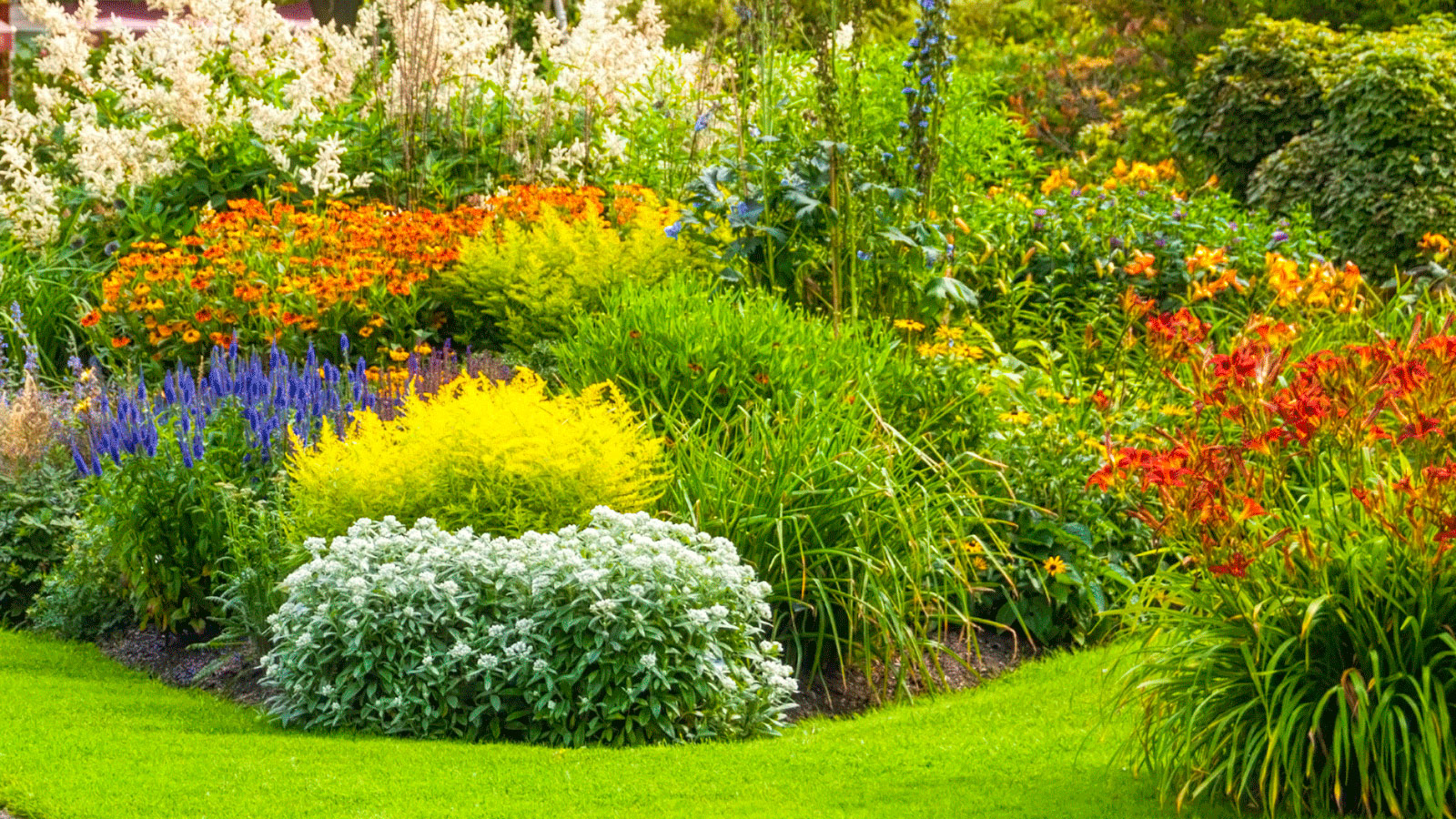

The island bed trend in garden design is big news right now. This aesthetic is a good fit with other current ideas like naturalistic planting and introducing more organic, curvy shapes. If you're looking for ideas on how to add some interest to a dull rectangle or square of lawn, creating a thoughtfully planted island bed will transform the space.
Whether you have a small garden that you want to make look bigger, or a large one where you want to create a feeling of intimacy, these 'floating' features can add a designer touch that really helps to 'finish' the space. Island beds can be walked around and seen from all sides, which helps to elevate your garden design into more of a showpiece.
There are many other benefits too, both on a practical and aesthetic level. Now find out more with our expert-led garden ideas for island bed designs, plus coverage of the key things to consider if you want to add one to your yard.
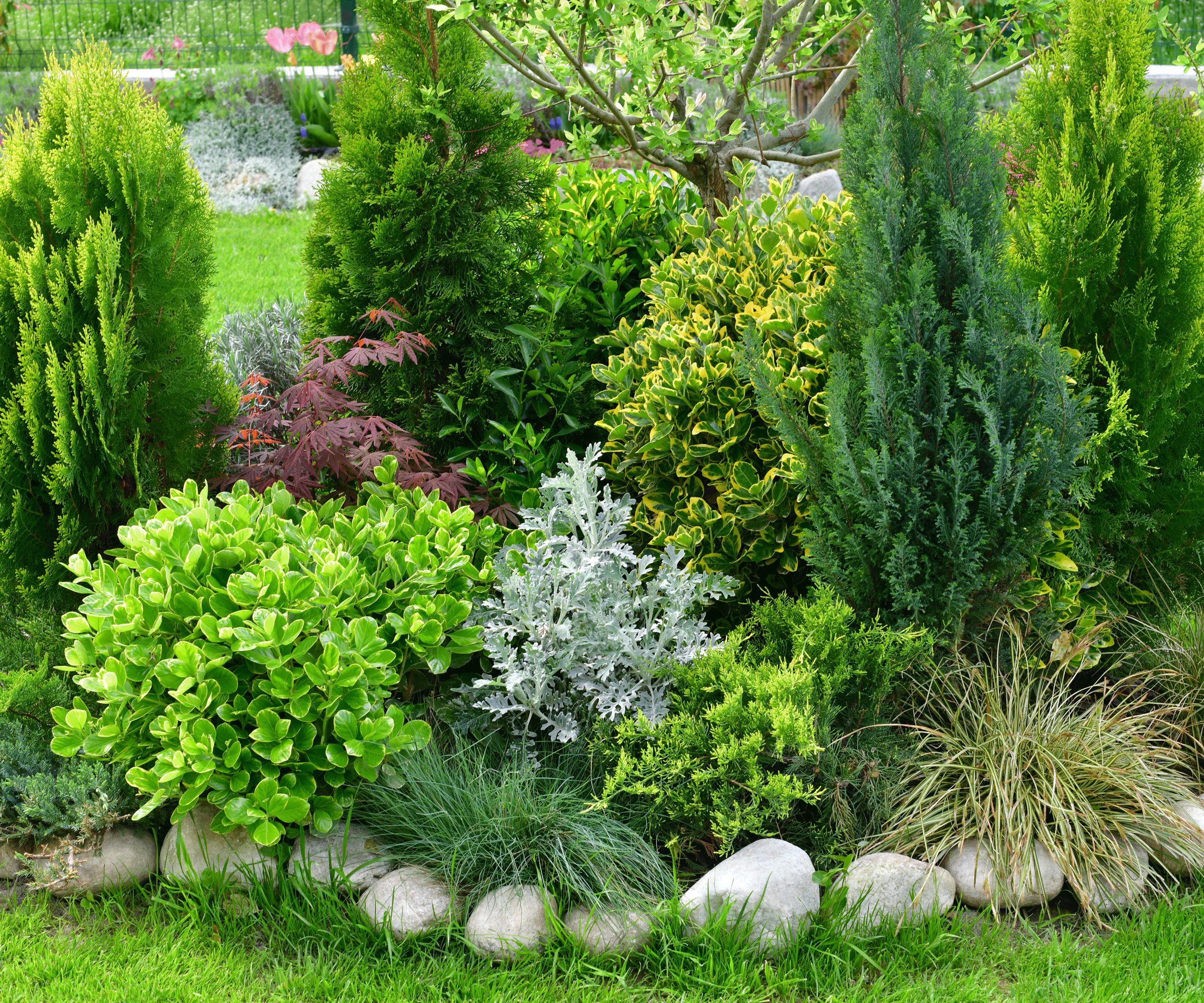
This island bed design features a combination of evergreen shrubs and trees with an eye-catching edging of small rocks
What is an island bed?
Island beds are planted areas that generally feature a flowing, curved design and are used to break up the monotony of a uniform landscaped lawn or gravel gardens.
They are often elongated in design, kidney, teardrop or crescent shaped, occasionally taking the form of a flattened oval, with the idea that they lend sweeping impact to your garden design.
'Island beds offer a sculptural, eye-catching centerpiece that can transform a basic lawn or garden bed into something more dynamic and curated,' says Michael Clarke.
'Unlike traditional garden beds that line a fence or wall, island beds can be viewed from all sides, making them more engaging and dramatic. They act like visual anchors in open lawns, drawing the eye and helping to organize space.'
Design expertise in your inbox – from inspiring decorating ideas and beautiful celebrity homes to practical gardening advice and shopping round-ups.
It's a good idea to include evergreens, ornamental grasses, or winter-blooming perennials so your bed has interest year-round with the change in seasons and to combine bold foliage with flowering plants like purple-leaved heucheras with golden coreopsis or lavender.
They tend to gravitate towards a naturalistic style of planting as their starting point. They add valuable height and visual weight, but it's important to get the scale and dimensions right so the fit is good within your overall design. This is especially important if you are considering a series of island beds.
As a general rule, island beds tend to be three times as long as they are wide, but obviously it's up to you to decide what size works best in your garden according to your particular requirements and the space available.
First, play around with ideas by sketching some shapes on paper. You might find you want to throw the rulebook out the window and come up with your own design. Just be sure to make 'big yard, big bed' and 'small yard, small bed' your starting point.

Michael Clarke is the founder of Yardwork and Pulled, the online platforms for everything home and garden. He has a degree in landscape architecture and horticulture from the University of California Davis. He was previously the founder of a landscape development and maintenance company.
How do you make an island bed?
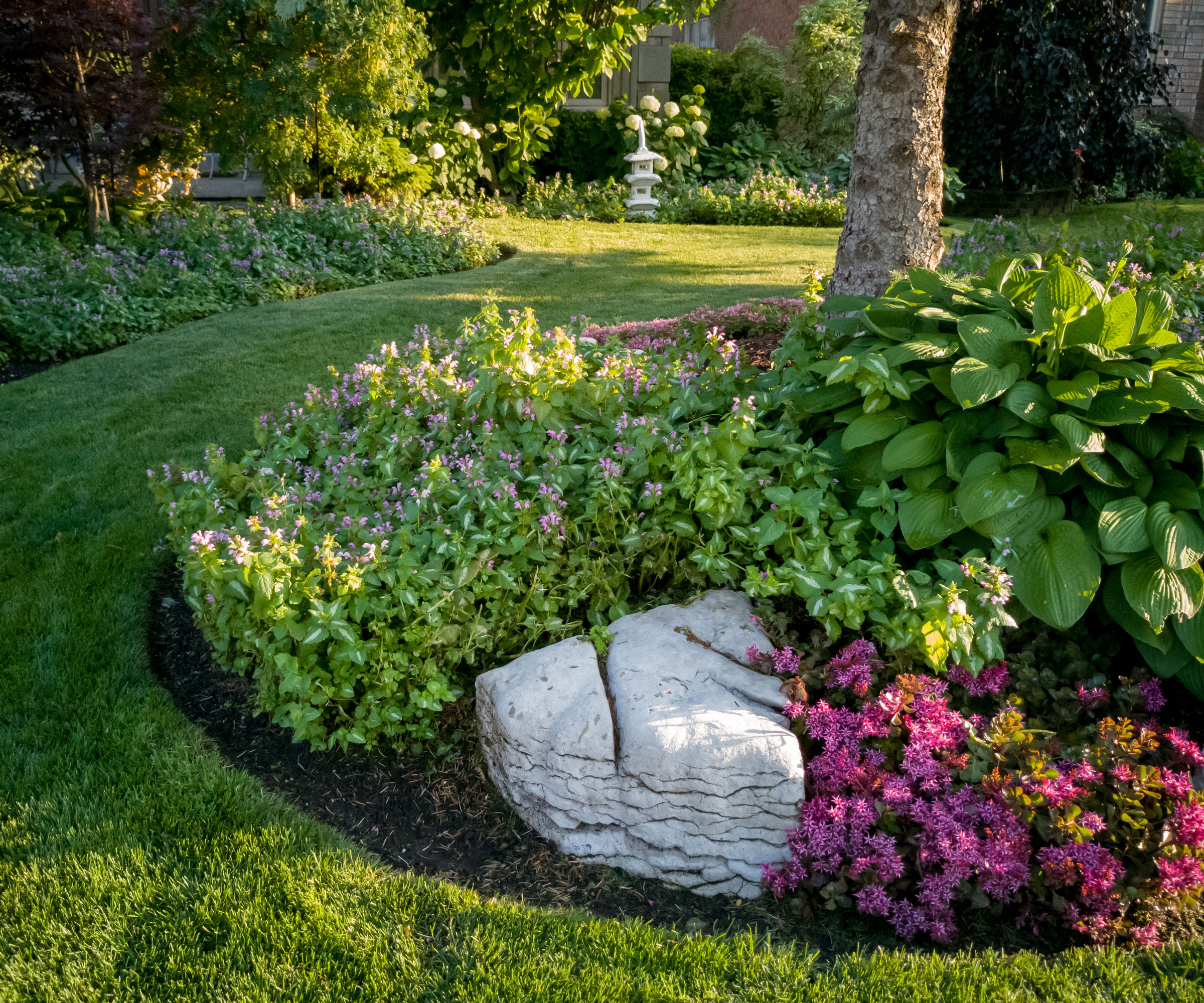
Landscaping rocks make island beds feel established
Decide on the best place to position the island bed. As the name suggests, you should be able to walk around the site you choose. Translate your garden trends and ideas into real life by marking the outline of the new bed on the lawn with sand or string.
'Organic curves can make an island bed feel soft and natural and work well in cottage or wildflower-style gardens, while geometric shapes like ovals or teardrops feel modern and structured, working well in contemporary spaces,' says Michael Clarke.
Using a spade, dig up all the lawn within the perimeter of your design, going down to a depth of about 6 inches. Fill with fresh topsoil mixed with compost to give your plants the best possible start.
Place any landscaping rocks within the bed before you start planting, and decide if you are going to edge the island bed with stones, pebbles or another decorative element. Then you are ready to start planting.
What are the benefits of an island bed?
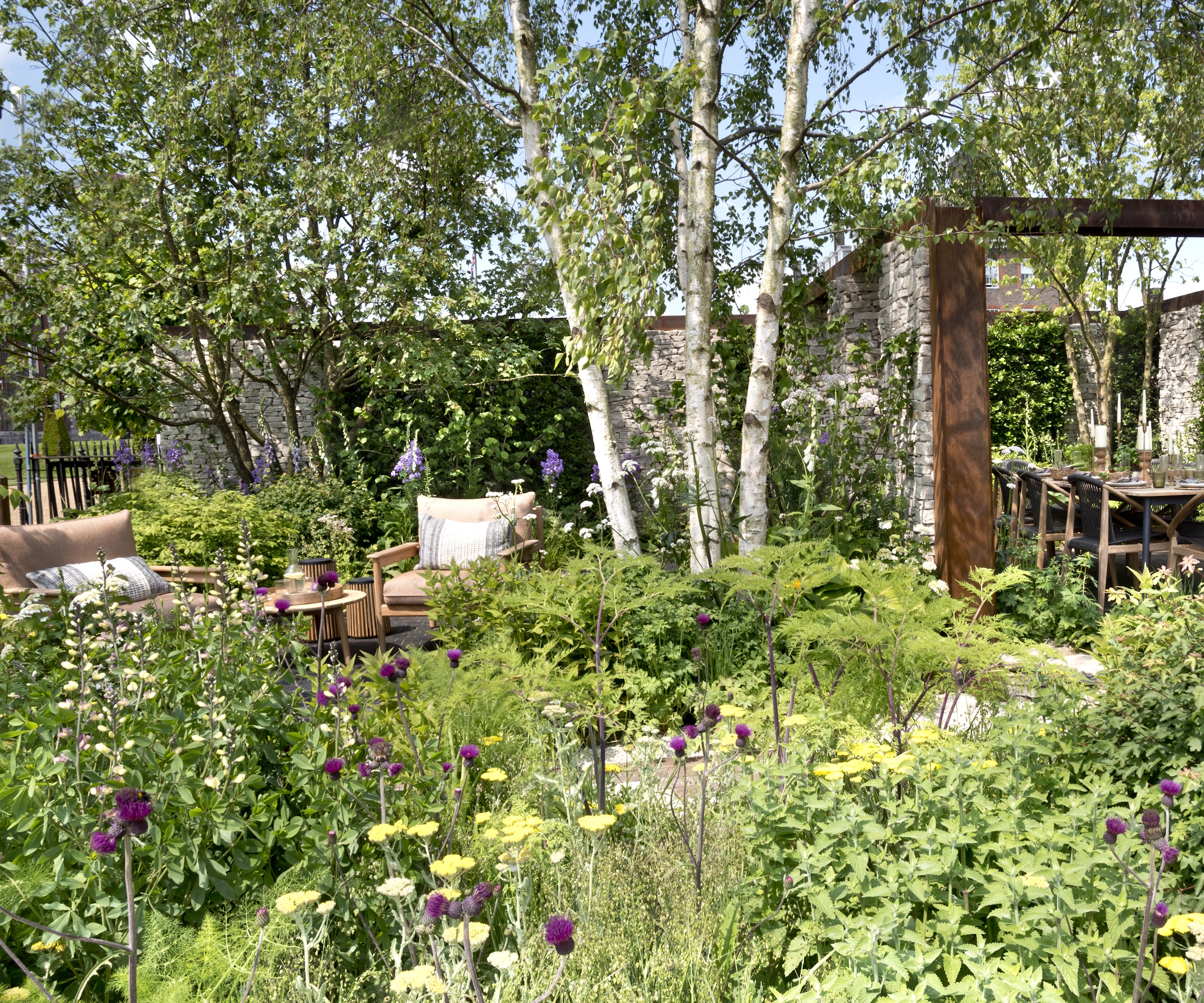
Combining a water feature with an island bed adds a beautiful detail
An island bed can be added to your design, irrespective of your US hardiness zone or whether the garden is big or small.
In large gardens with big areas of lawn, introducing an island bed can make the space feel more intimate, as well as adding a beautiful focal point.
Conversely, in a small garden, an island bed can be used to make the space feel bigger by adding an interesting distraction from the small dimensions.
Try adding an ornamental tree to an island bed planting design if you want to block an undesired view.
Meanwhile, if you plant a row of trees or shrubs, this will form a privacy screen along a boundary.
Island beds can add visual impact to a front yard planting scheme to give curb appeal, as well as enhance the street view when you look out of the window.
In backyard designs, they can add a surprise element, hiding a secluded seating area, for example, which will then be revealed when you walk around the island bed.
If there is enough height in the planting, they can also be used to screen a garden shed or children's play area from view. So, using tall perennial flowers is a good idea. Try these foxglove live plants from Walmart for color and height.
Why are island beds trending?
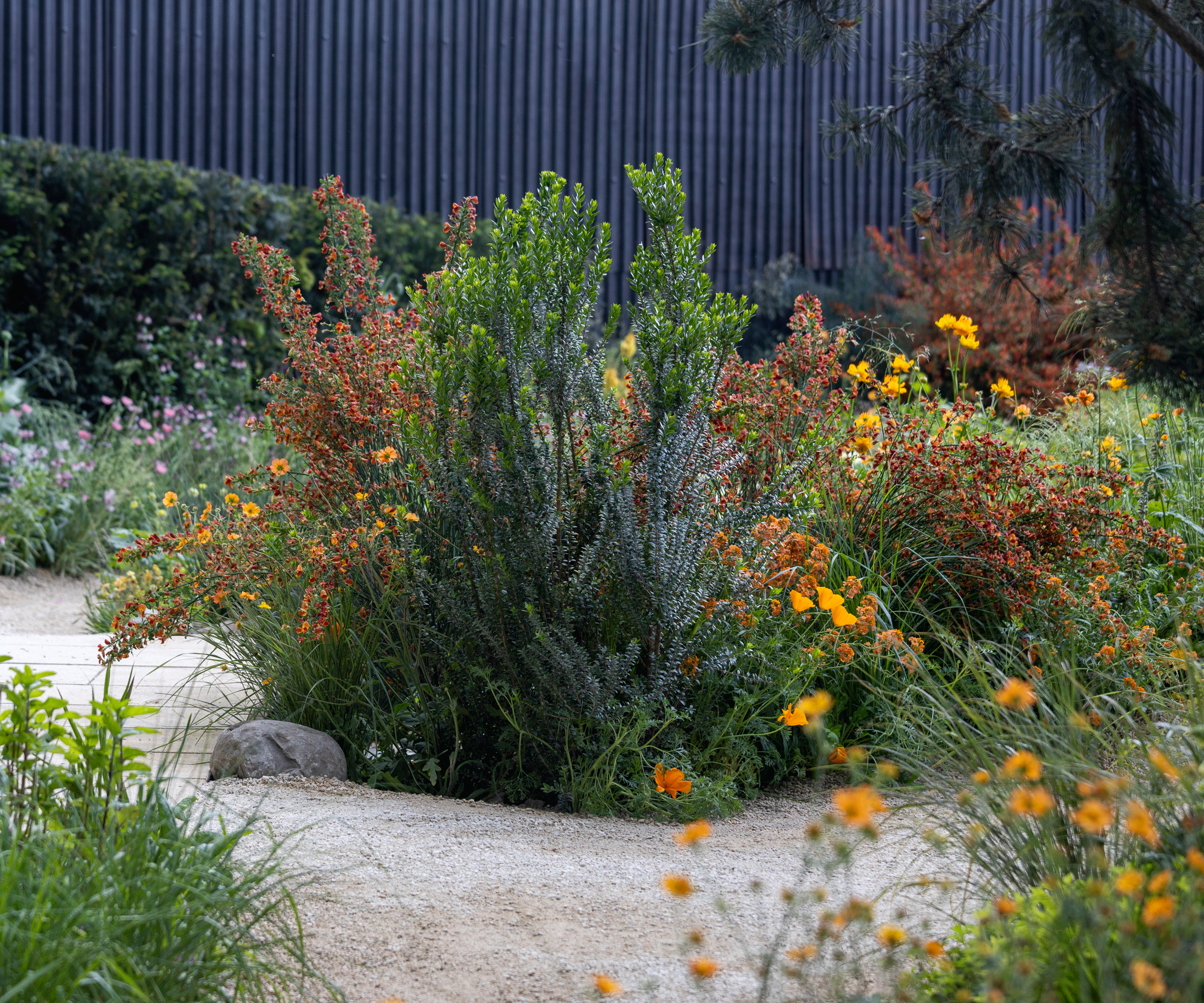
The gentle contours of this modern island bed set in gravel celebrate a more naturalistic planting style
Island beds generally have a curved, organic shape that fits right in with the rewilding garden trend and the move towards more naturalistic planting designs. They also tap into the zeitgeist for reducing the lawn area in your yard as part of sustainable gardening ideas.
If you love the idea of landscaping with gravel, the good news is that island beds work really well in combination with this.
Add landscaping ideas with rocks too, as a well-placed boulder will add character and interest to island bed designs, as well as being a creative way to give depth and dimension.
Another reason why the island bed is trending is that it's a low-maintenance option with minimum intervention required as long as you choose the right planting combination.
This means selecting plants that like the same growing conditions, such as low-maintenance drought-tolerant plants and drought-tolerant trees, which also cuts down on the labor of watering regularly.
How do I plant an island bed?
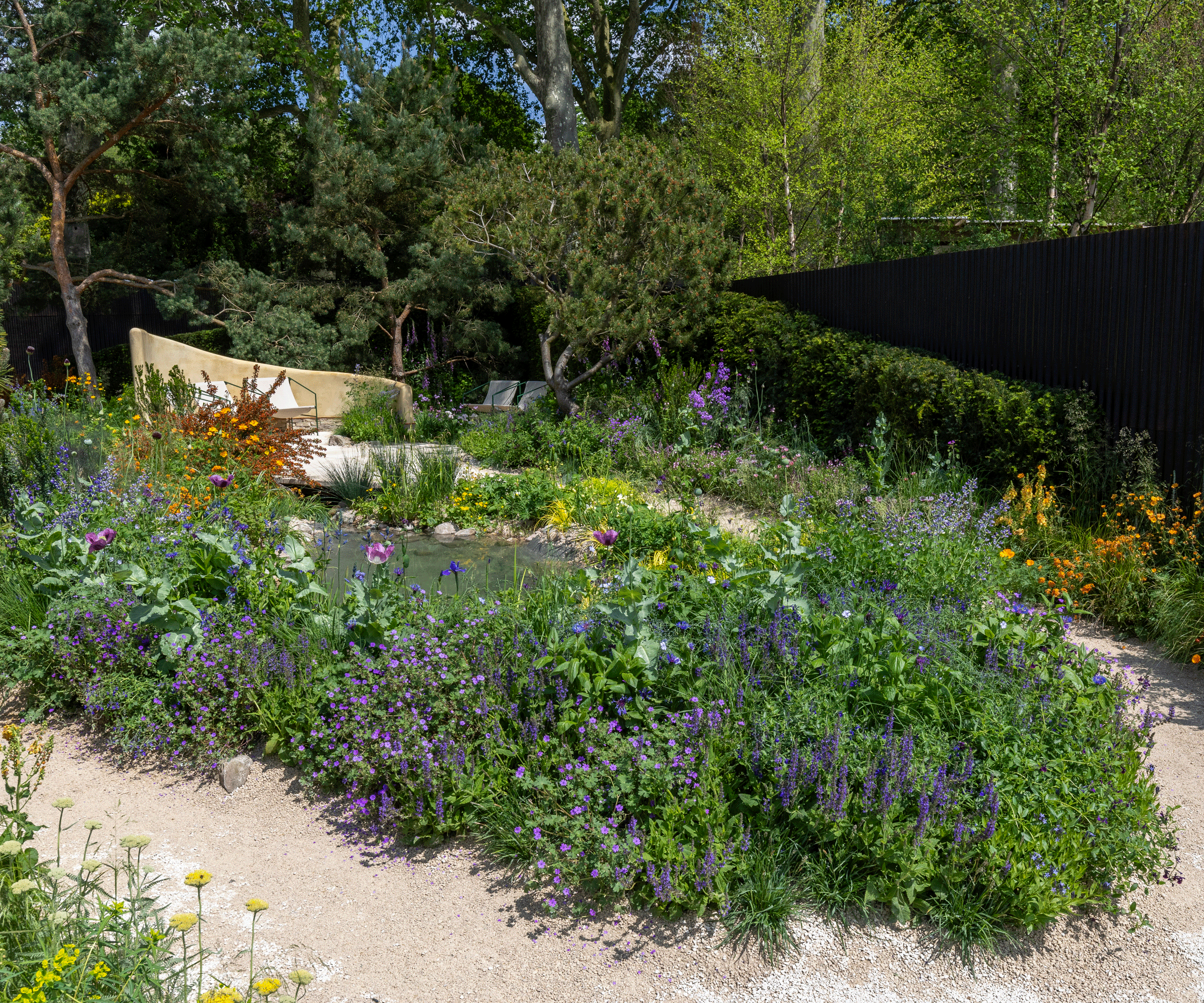
Naturalistic planting spills over to blur the boundaries of this stunning island bed
It's a good idea to opt for a layered planting scheme for island beds to get that lovely 'designed' feel that will make your ideas stand out.
Aim for drifts of repeat patterns of three, five or seven of each plant throughout the island bed to create a cohesive design that flows.
Choose a range of planting options that offer multi-season interest, as nothing looks worse than a bare island bed in winter. It's also a good idea to choose long-flowering varieties, as the area will be in the spotlight, so obvious gaps aren't a good look either.
'Tall plants or ornamental trees work best in the center of the bed, with mid-height shrubs or grasses filling in the middle,' says Michael Clarke.
'Evergreen ground cover plants or spilling plants like creeping thyme and sedum work great at the edges to create a finished look.' Try growing monkey grass, available from Nature Hills.
Position a statement tree or shrub in the center of the island bed to create height and work as the main focal point. Then add structure with some carefully placed evergreen shrubs that will perform all year round.
Next, choose a flowering shrub that will offer shape, color and seasonal interest for an extended period.
Finally, fill the lower layers with a combination of perennial plants and ornamental grasses planted right up to the edges of the bed.
The idea is that no bare soil will be on show, so these plants work as ground cover to suppress weeds. Repeat planting of one or two varieties creates a much stronger effect than one or two plants dotted here and there.
Key planting elements
1. Ornamental tree
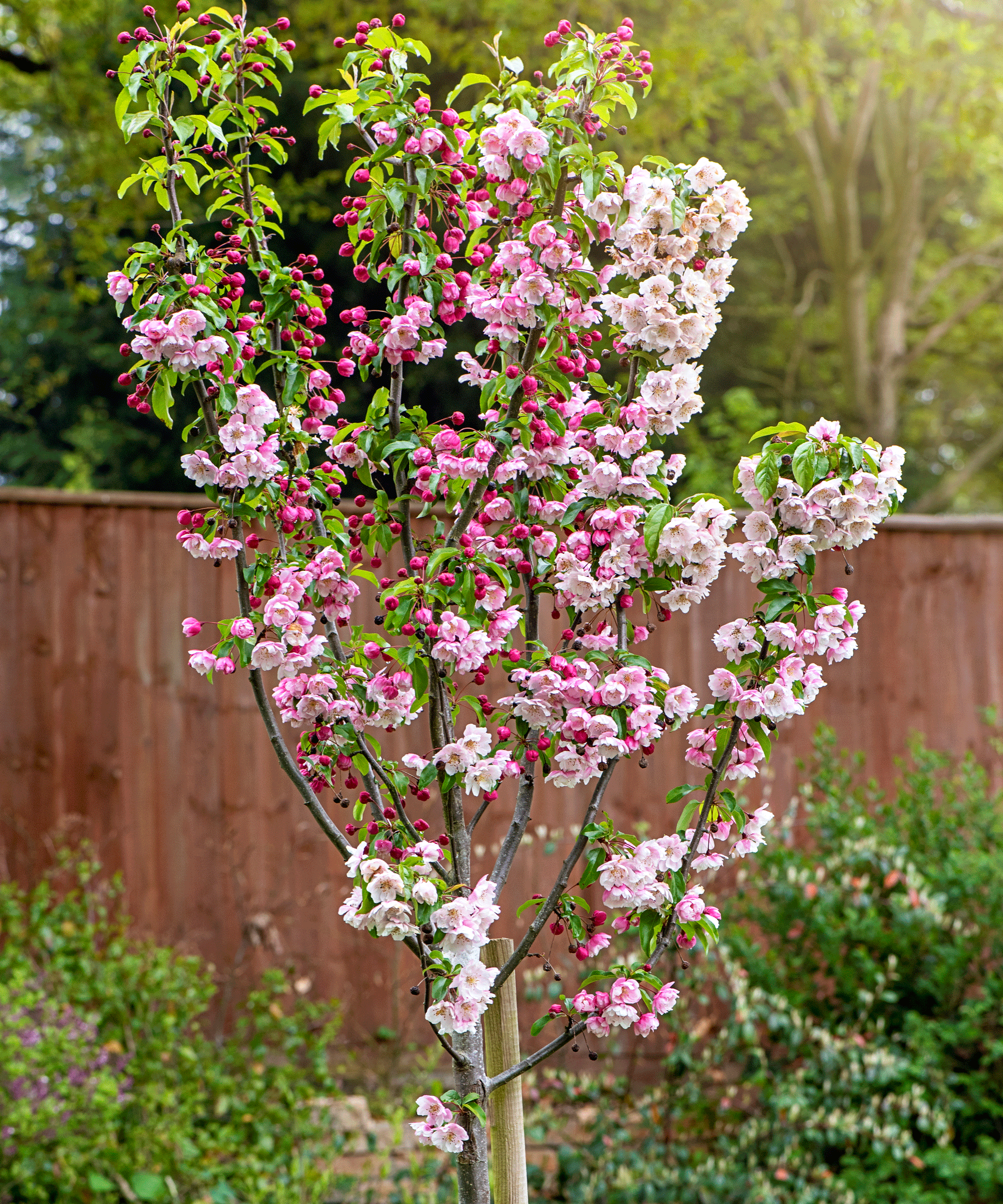
Small ornamental trees are a great addition to island beds as they add height and a focal point to help pull together your design. If space is limited, look out for dwarf varieties.
If you want plenty of seasonal interest right through the year, crab apple (pictured above) is a go-to choice for this type of planting.
The fragrant dark pink blossom, lush foliage, brilliant fall color and attractive fruit will make it a top choice for island beds. Try a Lollipop crab apple variety from Proven Winners.
Suited to zones 3-7, and growing no taller than 20 feet, this tree has a lovely rounded form and is a favorite of songbirds and pollinators if you're looking to attract wildlife to your island bed.
2. Evergreen shrub
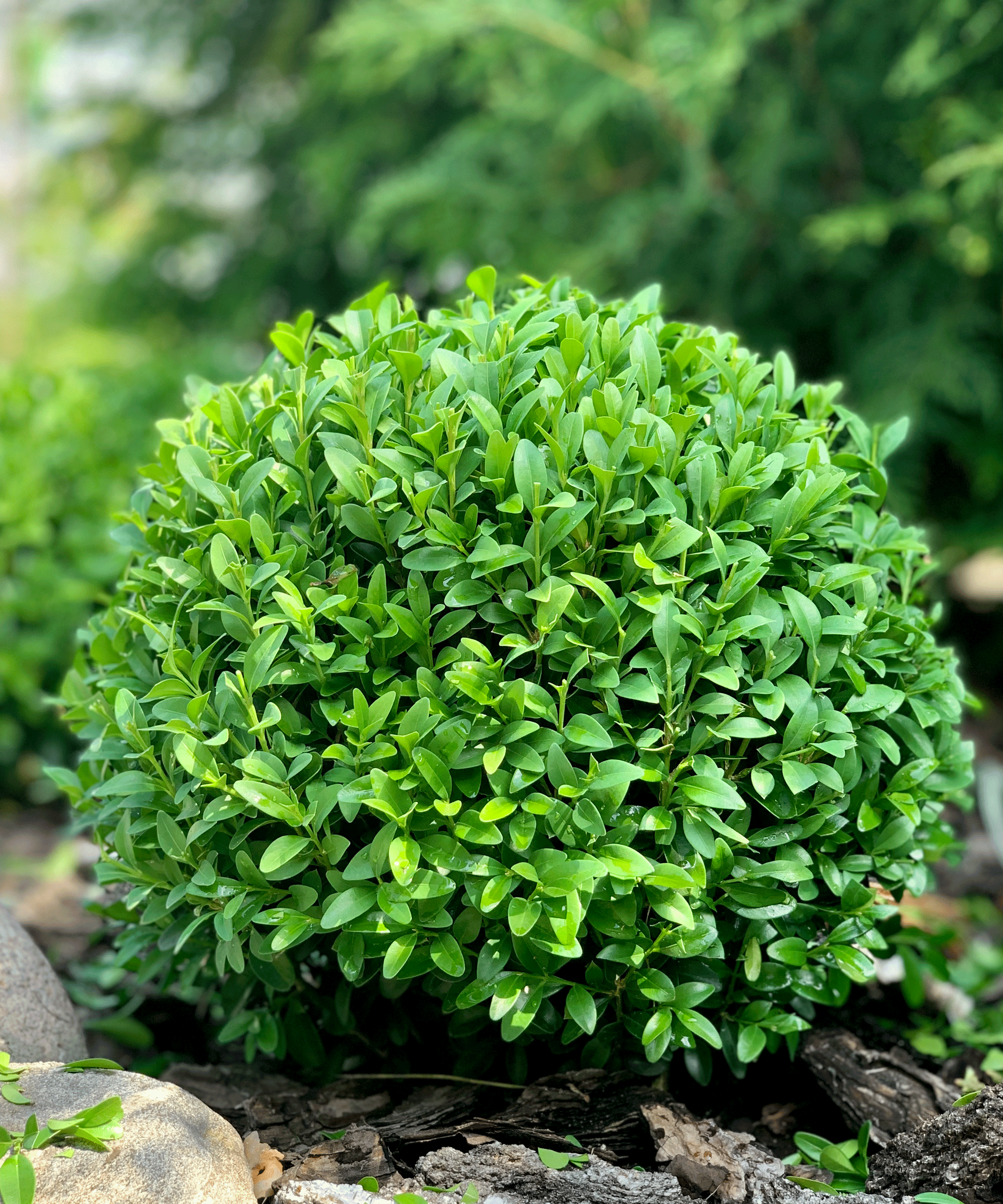
Every island bed needs some shapely evergreen plants to add structure and year-round interest.
Thanks to its dense growth habit, boxwood (pictured above) is one of the best evergreen shrubs and a favorite for island beds where it looks good clipped into neat shapes. This plant lends itself to all sorts of creative shaping, including the balls pictured here.
Happy in full sun or part-shade in USDA zones 5-9, boxwood grows slowly, so it won't take over your island bed.
It contrasts beautifully with hydrangea if you're looking for planting partners. When planted correctly and given proper care, these forgiving shrubs need little attention once established.
Try a Green Gem boxwood from Nature Hills, prized for its compact, rounded shape and vibrant green foliage.
3. Flowering shrub
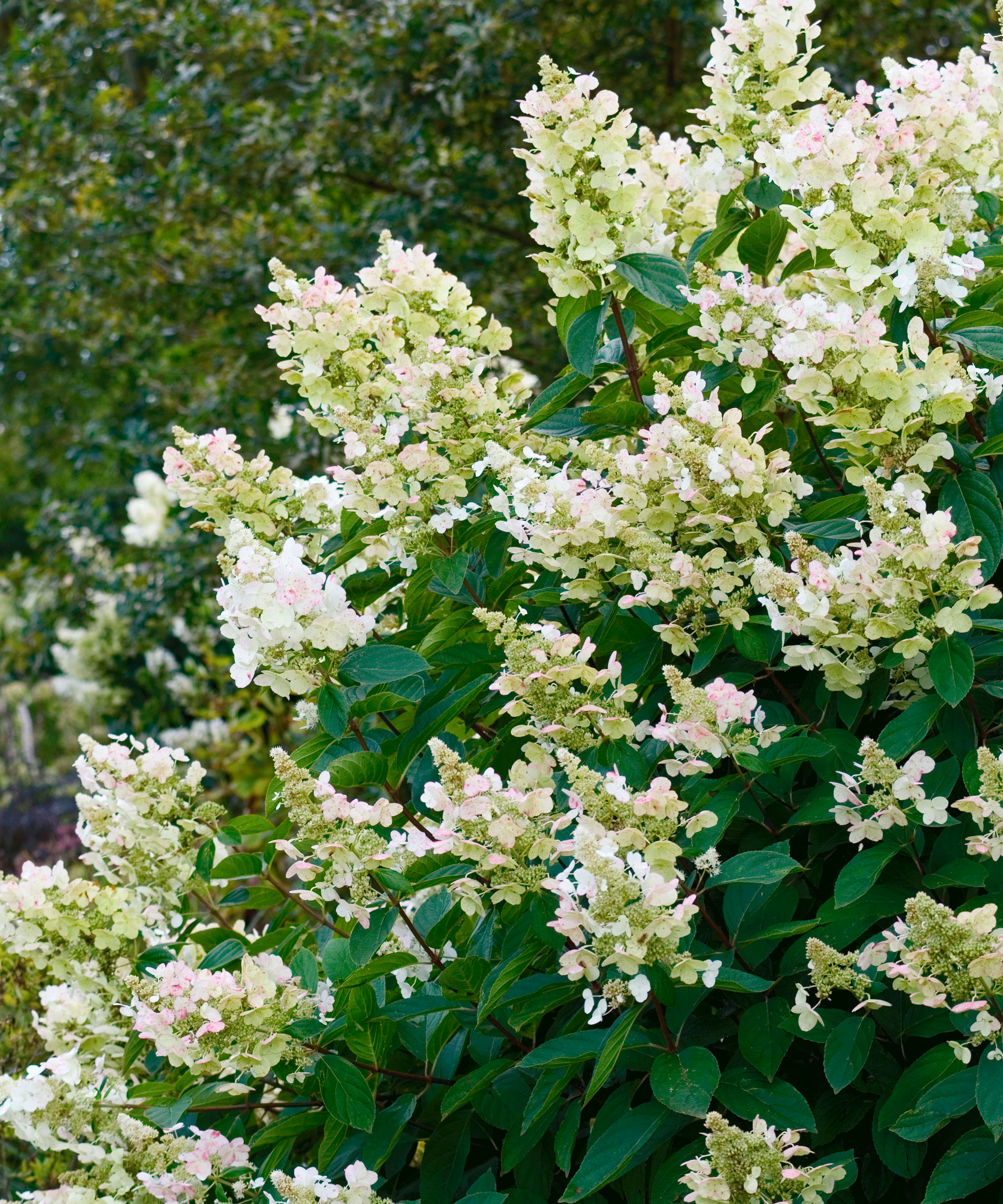
Choose a long-flowering shrub with big blooms to add some drama to your planting, set off perfectly against the backdrop of dark boxwoods.
One of the most versatile plants in garden landscaping, hydrangea are a go-to choice for island beds.
Plant a small variety amongst the boxwood and perennials in an island border for long-lasting, easy-care beauty year after year.
Choose one of the best hydrangea varieties, such as this Bobo paniculata from Perfect Plants Nursery, to create dynamic texture in even the smallest compact island bed.
Blooming all summer long and into fall, these varieties do best in USDA zones 4–8, and the good news is that there are small cultivars available too that work really well in more compact island beds.
4. Perennial plants
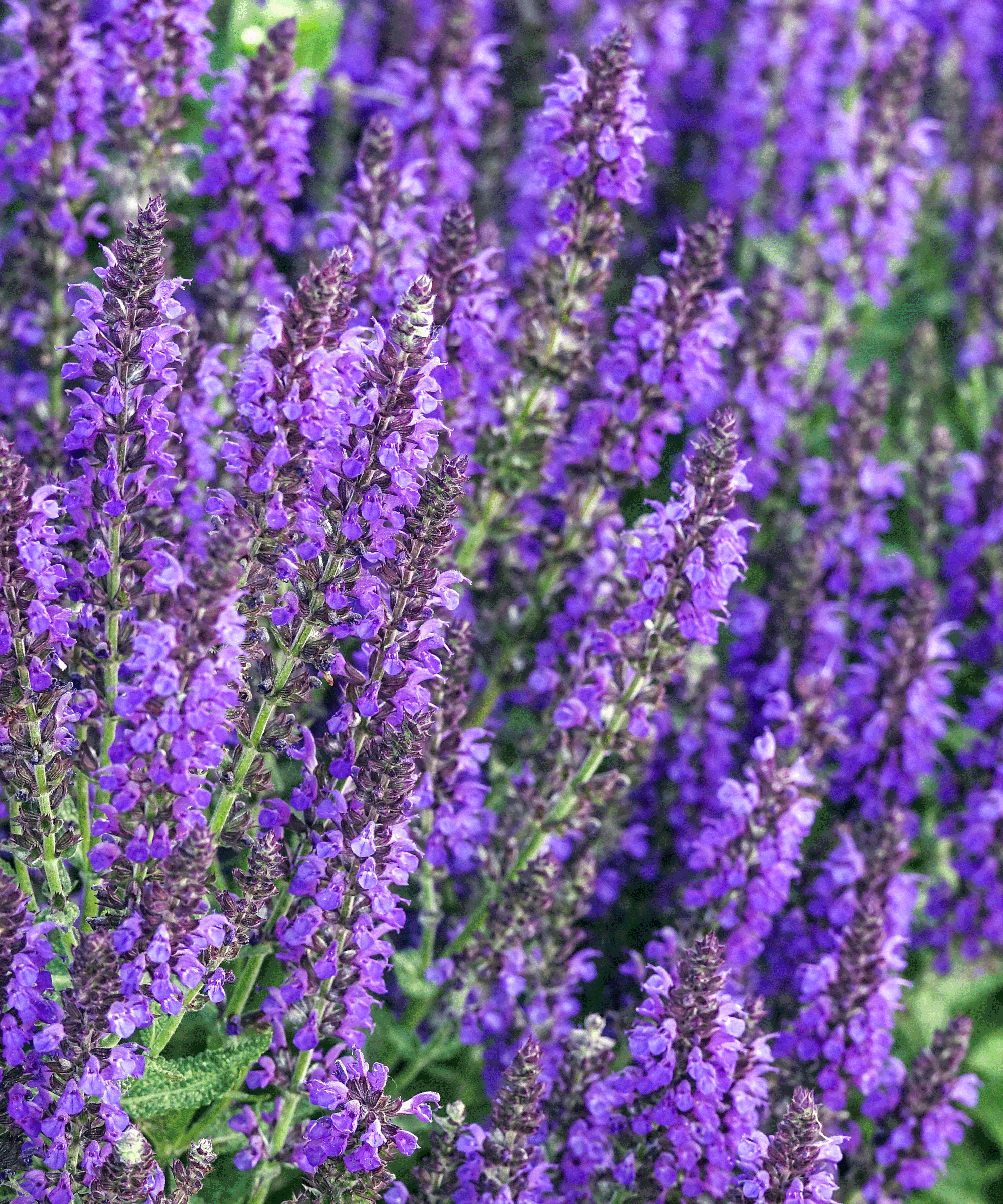
Add color and depth to your island bed with long-flowering perennial plants that will bloom right through summer and into fall.
Put Salvia right at the top of your wish list as they are a plant that will add so much to your planting scheme and are always a reliable choice.
Salvia nemorosa 'Marcus' (pictured above) is an easy, hardy perennial plant that works well in island beds.
The deep purple flower spikes and aromatic foliage form attractive clumps that attract bees and butterflies as well as complement your planting. Find the easy-to-grow Salvia 'Marcus' at Nature Hills.
Thriving in growing zones 4-9, this salvia variety doesn't need a lot of water and likes a full sun position. It makes a great filler woven between other plants and is good for edging, too.
5. Ornamental grasses
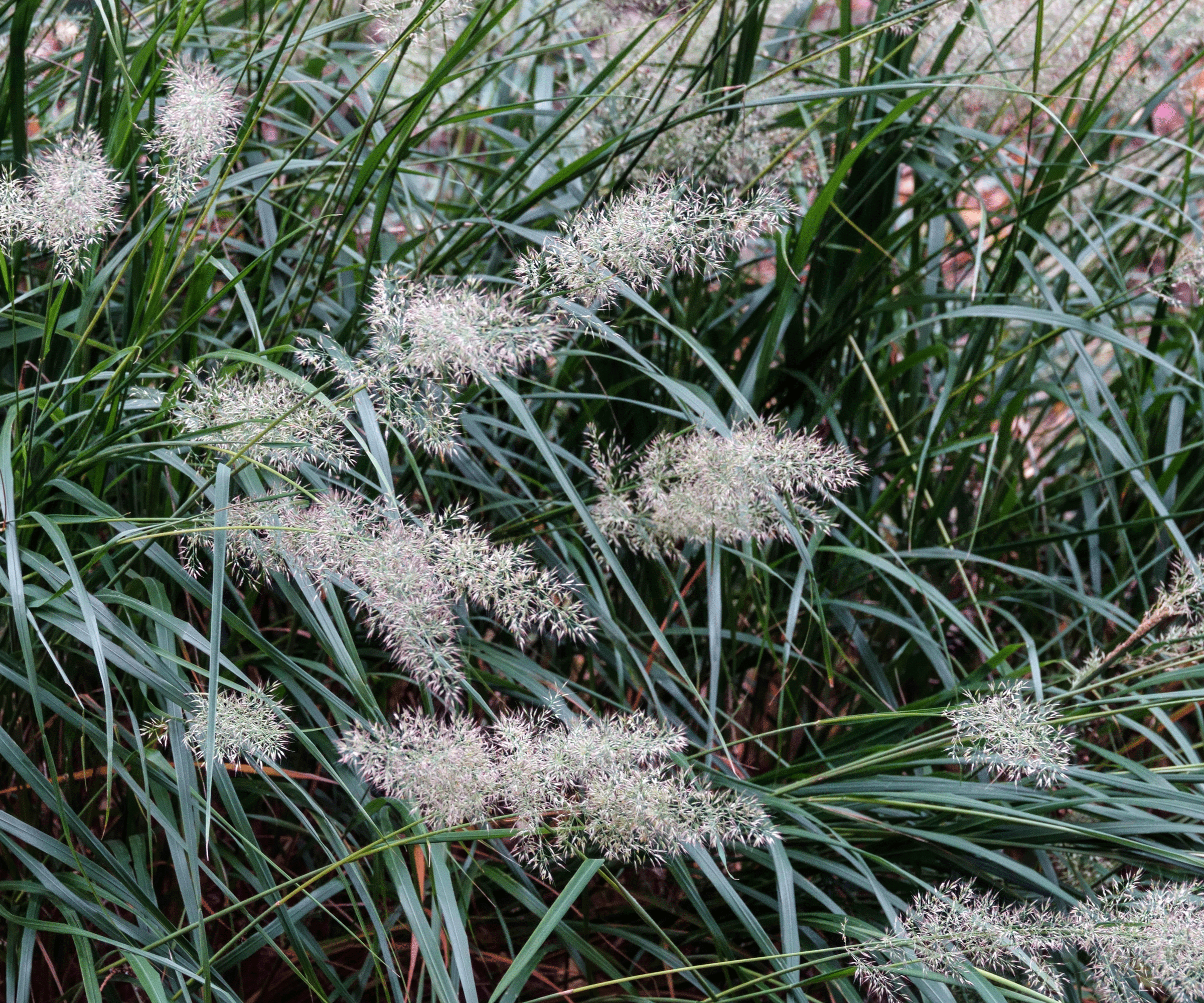
Choose landscaping with ornamental grasses for island bed planting to fill out the lower layers. It will form attractive clumps that will soon spread, making it an ideal choice for repeat planting schemes in island beds.
Look out for Korean feather reed grass (Calamagrostis brachytricha). Pictured above, this showy grass spills gracefully over the edges of flower beds, holds its color into fall and has beautiful seedheads. It's suitable for planting in USDA zones 4 to 9.
Find Korean feather reed grass at Nature Hills to add a stunning ornamental grass variety to fill your island bed design with texture and movement as they sway in the breeze.
In the first year after planting, be sure to keep an eye on your plants, watering and feeding them to give them the best start.
Now get more inspiration from other flower bed ideas to give your planting the edge.

Lifestyle journalist Sarah Wilson writes about garden design and landscaping trends for Homes & Gardens. She has studied introductory garden and landscape design, and also has an RHS Level 2 qualification in the Principles of Plant Growth and Development. She is a regular contributor to Homes & Gardens and Livingetc. She has also written for Country Living, Country Homes & Interiors, and Modern Gardens magazines
You must confirm your public display name before commenting
Please logout and then login again, you will then be prompted to enter your display name.